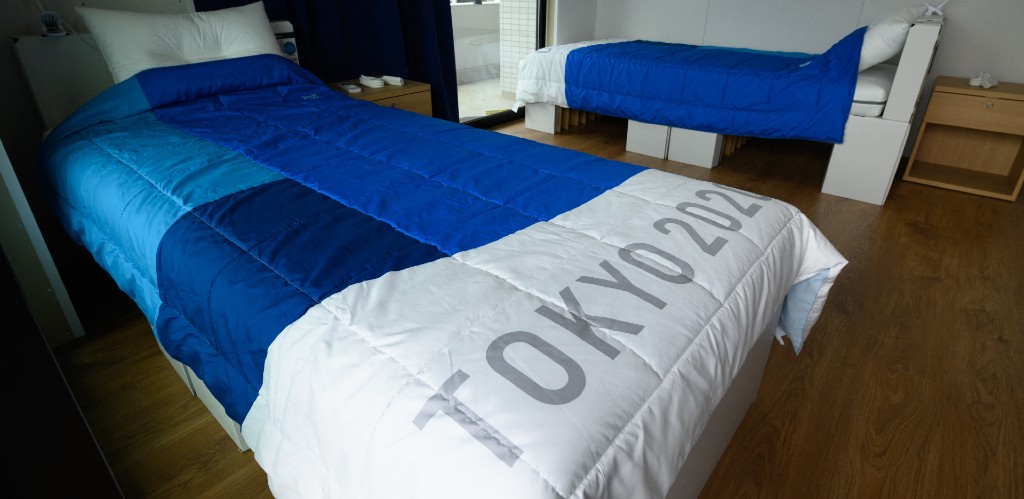The Olympics are many things to many people, but at the heart of the games is a horniness that’s rekindled every two years as the world comes together to play. Which is why this summer’s Tokyo Games, played amid a still-raging pandemic that’s made close contact not nearly as encouraged as at other events, will certainly have some changes in store for the thousands of athletes descending on Japan.
Health and safety concerns about the Games have been a major story since they were postponed last year. As the games gear up later this week after a year pause, for example, stories have circulated about the condoms famously distributed for athletes at the Games. While some reports say no condoms have been distributed, the less-horny fact is that the 160,000 prophylactics were described as “souvenirs” by Olympic officials according to The Guardian. In other words, use them at home, not in Tokyo.
The beds athletes sleep on have also been a major news item, as they are made of cardboard. That oddity had sparked its own news cycle. In recent days a number of tweets and social media reports indicated that the beds were made to only hold 400 pounds, which was an attempt to limit sexual intercourse between athletes because they would simply break if they exceeded their, um, load capacity. Even some athletes relayed that news as fact.
https://twitter.com/Paulchelimo/status/1416240846039523331
Those tweets even sparked some notable publications to write about the “anti-sex” Olympic beds as fact. But that sourcing was murky at best, and the reason for the cardboard beds is apparently an environmental one. And as athletes arrive in the villages, they’re testing the beds out for themselves and finding that story to not hold up as well as the actual beds.
An Irish gymnast named Rhys McClenaghan tweeted out a video of him jumping on the beds, declaring the “anti-sex” narrative “fake news.” The official Olympics Twitter account retweeted that video as well, it’s worth noting.
https://twitter.com/McClenaghanRhys/status/1416567768938291203
As the New York Times notes, while a scaled-down number of condoms were distributed for the games, the beds were planned well before the pandemic started in earnest. And the company that makes them says they are extremely strong, relatively speaking.
“Cardboard beds are actually stronger than the one made of wood or steel,” Airweave said in a statement on Monday according to the New York Times. That report also cited an Associated Press story from 2019, before the pandemic, that cited the beds as an environmentally friendly initiative, not an anti-sex one.
The single bed frames will be recycled into paper products after the games. The mattress components — the mattresses are not made of cardboard — will be recycled into plastic products.
The mattress is broken up into three distinct sections, and the firmness of each can be adjusted.
The idea was to use materials that could be remade after the Olympics and Paralympics. But the cardboard frames and supports should give the rooms a spartan look.
There are still a number of things that have been a mess about the Games ahead of their start, including a number of COVID positive tests that have caused havoc on the schedule and athlete pool. But if athletes want to use those souvenir condoms, well, the beds will probably hold firm.







